Many people think you have to go out of the city to observe and enjoy nature. But even in a metropolitan area you can get in contact with nature by opening the front door.
It’s all about seeing and exploring; you don’t need to travel for that. In this article I’ll explain how to look around your neighborhood to shoot photos of wild flowers.
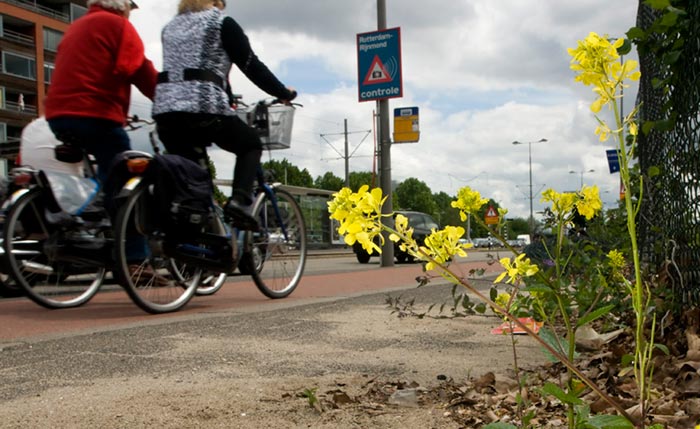
As early as April, you can take your camera outdoors to search for wild flowers along the streets. Even on a cloudy day you can capture stunning images. I was amazed how many flowers I found in a single day of composing images in Rotterdam. A city can provide lots of opportunity for great flower photography
As I worked to create interesting perspectives, the people passing by peered at me, and I could almost read their minds: “What is he doing there?” But, as a photographer, I don’t care about curious stares. I live for my work. I realize I look strange as I position myself at ground level with my camera.
But I get a perspective in my photographs that make them stunning, a perspective that provides my ultimate viewers with a good understanding of the relation of the flowers to daily life in the city. The use of my flash gives a bright yellow light to the blossoms in the picture, so they attract all the attention.
It’s important to draw your viewers to the subject of your image. I placed the flowers on the right and waited about ten minutes before a couple people passed by on bicycles. Without pausing a second, I pressed my exposure button to freeze the moment.
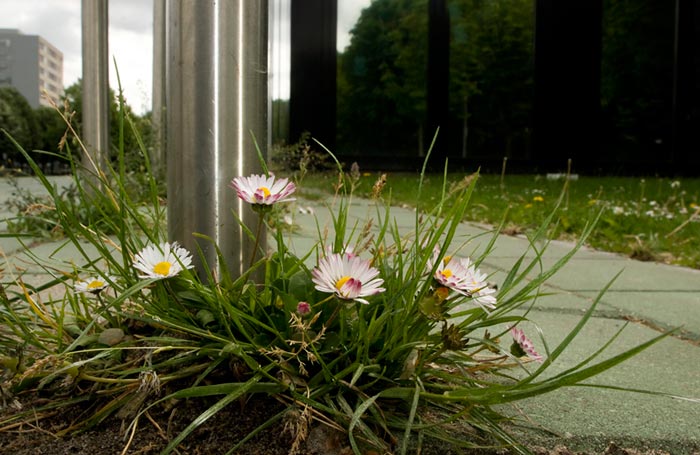
I discovered a school building beside an exclusive bicycle store. Nearby, I found flowers blooming 8 cm high. I lay on the ground to place my camera at the same level as the flowers. I used my viewfinder to search for just the right composition.
At the upper left loomed a large apartment building where a few hundred people live and on the right the imposing building of the school stood in dark silhouette, which was nice for the picture. I used my flash from the side to get more side light in the photo, so the image would be more exciting.
My position made people wonder if they could do the same—lie on the ground to take interesting photos. It takes some time to get the right composition in these situations, because you are distracted by the grasses. They provide some lines in the background that make composition difficult.
But, after some time and experimentation, you get the right composition. Be to examine your flower from different corners to find the best background for the image. Otherwise the exposure on the flower may be good, but if the background is too busy, the image is not what it could be.
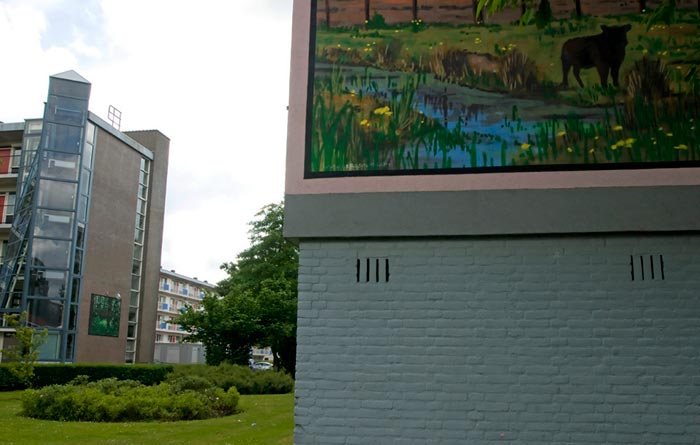
An artist created a painting on flats. It is screaming for biodiversity, that we have to reserve more space for our natural world. We have lost many species and places where we could observe our roots. We came from nature. We have to be proud of wild flowers.
These paintings are signals to the rest of our community–bells, alarms that something has to be done. As photographers, we can be a huge help. Take your camera and go shoot photos in your street and send them to the local newspaper. Explain your idea and ask them to publish your photos in either the paper or a local magazine.
In my photo, in order to get attention for the painting on the left flat, I cut the upper part of the painting of the right. It’s better to see a part of the subject than the complete subject when you have more than one topic in a photo.
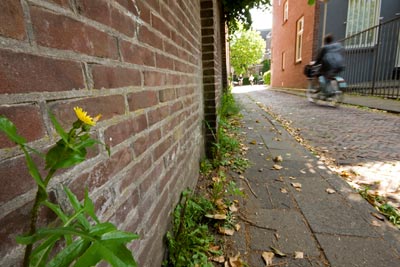
This flower lies near a wall, fighting for its own place. Take a good look at the composition and try to do the same. When you find the right composition, wait until someone is passing by to fill in the image. Otherwise the image is too empty; the story is missing. Be sure to situate people or a connection with people in the photo. It’s easier said than done, but take time and you’ll achieve success.
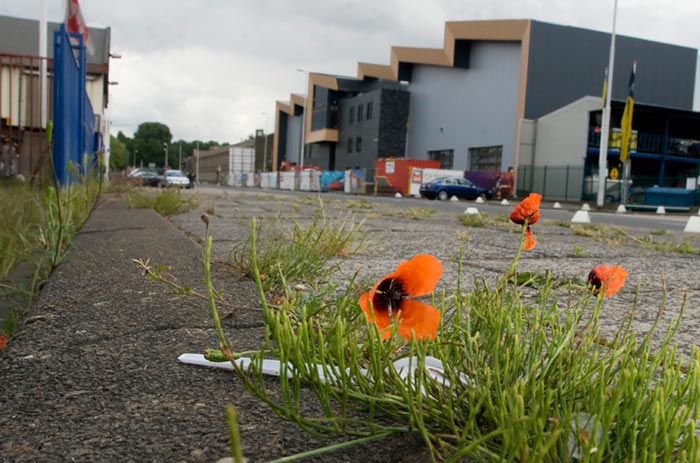
I also visited the industrial portions of Rotterdam and found some flowering Common Poppy. Houses crowd together at the end of the street behind the trees. My first opinion was what a mess–the garbage between the flowers. It looks like noise.
People have no idea what they’re doing. It’s not their problem; it has to be someone else’s problem. Wrong! The problem belongs to us all. The flowers are important for our health. The insects that pollinated these flowers are important for us. I didn’t use my flash to portray the scene because it needs drama. We have to show the truth.
Equipment
To get a photo that explains biodiversity in the city, use a wide angle lens with a focal length less than 18 mm. Never use a filter. It’s better to set the white balance of your camera to cloudy, sunny, or shade. Look at where your subject is located and then set the white balance or your camera at the right selection. Select your aperture between F/14 and F/20 because everything has to be sharp in the photo–expressing biodiversity in the city eloquently is difficult.
So we need good photos that explain the story. Use your flash only when the flower is nice and clean without any mess inside the flower. Use an ISO 400 or lower to get the most natural colors in the moment. We want to inspire others to do what you’re doing–shooting the beauty of flowers in the city. Shoot your photos without using a tripod so you can work fast and have the largest selection of compositions.
Behind the museum of www.naturalsciences.be in Brussels, they have used a park to create a new biotope to give nature an opportunity for wild flowers, insects, and birds. People from the large city of Brussels get an opportunity to come in contact with nature. Most of them have encountered nature only in a small garden in front of their home. The flower came from a store; it stands isolated in a flower pot. That’s the connection most city dwellers have with biodiversity.
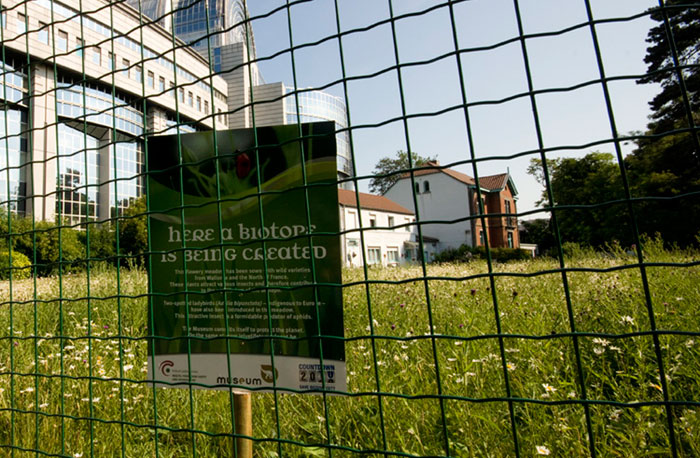
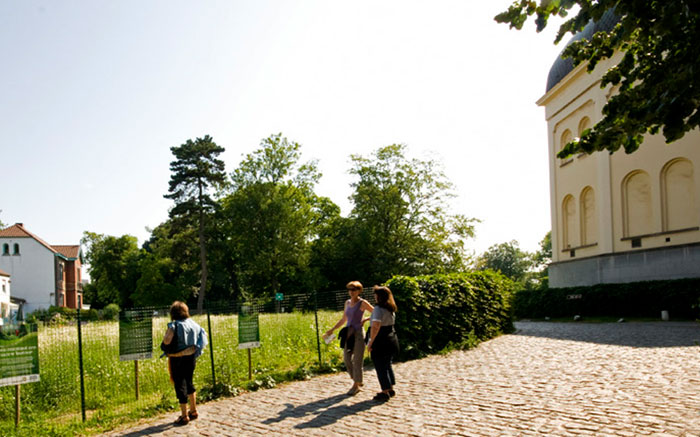
A new website www.igivelifetomyplanet.be is in Dutch and French. It emphasizes that bio-diversity includes all animals, plants, fungus and other life forms on the ground. It ensures oxygen, food, medicines, pure air and water, and much more. Bio-diversity is life! That life is in danger.
Species are disappearing at an alarming rate. Fortunately, it’s not too late yet. You need to participate and commit to preserving our beautiful planet. The website is for everyone who is willing to help by becoming an ambassador to spread the meaning of biodiversity.
Find your own way to get involved. Take a little time out of your busy lives, pick a subject that fits you and capture those images. There are many web sites that offer information on biodiversity in your language, so let your fingers do the walking through the search engines.
Read Nature in the City–Part 2: How to Shoot Photos of Insects
by Edwin Brosens

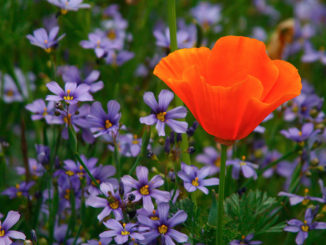
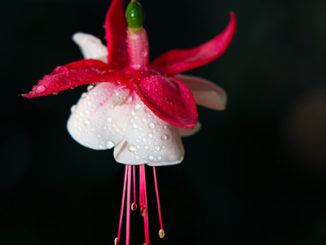
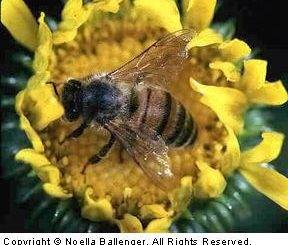
Leave a Reply